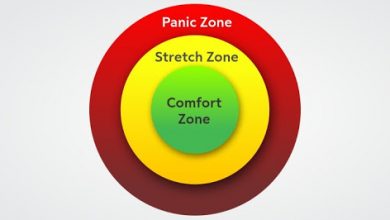How to Conduct a Constructive Debate
Debates can be an excellent way of expressing different opinions and raising awareness about the intricacies and nuances of a certain topic. However, debates can also go very wrong if not handled properly, leading to people feeling hurt, misunderstood or attacked. This article aims to give some ideas and guidelines that can help you to effectively conduct a constructive debate. Although there is a specific example one method of conducting a debate in the section of “exercises/how to apply it to everyday life”, the main purpose of the article is not to provide the technicalities of how to conduct a debate, but rather strategies you can use to make it safe and effective from a psychological perspective.

Why did I choose this tool? I personally like debates a lot and have learned a lot from the debates that I have participated in and from the ones that I have facilitated. I also know that it’s not always easy to have an effective debate, both from the perspective of the facilitator and that of the participants. I chose this tool as a type of roadmap for conducting debates, which will hopefully lead to a good process and outcome.
How does this apply to being a trainer? Debating is one of the methods that you can use in training, but even if you don’t the principles below can apply to any kind of group discussion, especially those that involve different and opposing opinions. Knowing how to facilitate a debate will help you to confidently navigate the debate or the group discussion and lead the group to a productive process and/or outcome.
Main content:
What is a debate?
A debate is a process that involves formal discussion on a particular topic. In a debate, opposing arguments are put forward to argue for opposing viewpoints. Debate occurs in public meetings, academic institutions, legislative assemblies (and trainings). It is a formal type of discussion, often with a moderator and perhaps an audience, in addition to the debate participants.
How do you conduct an effective debate?
Here are some of the guidelines you can consider when you are facilitating a debate:
- Set the stage and be clear on the desired outcome
First of all, define the context and the purpose of the debate. What do you hope to get out of it? Will any decision be made based on the outcome, or will it just be a way of airing different views and learning from each other? Is the objective to get a specific outcome, and if so, will that outcome be published or used anywhere? What are the rules for the debate?
2. Make sure it’s safe
Without ensuring the psychological safety of the participants of the debate, it is unlikely that they will feel free to express their real views, and the results of the debate will be superficial and just a reiteration of some already accepted stance. Make it clear to the participants that everything is allowed (as in all kinds of opinions and viewpoints). Also ensure that they understand the main rule for any debate, which is to focus on debating the issue rather than attacking each other. Any argument that undermines a person’s individual or group identity should not be allowed. Here is how you can understand the difference:
Debating the issue: I believe that the problems in the Middle East can be solved with better education practices.
Attacking the group: I believe that everyone in the Middle East is ignorant and barbaric.
If people feel that their identity or the identity of the group they belong to is attacked, they will inevitably get into fight or flight mode, as is our human nature, and you will end up with a conflict on your hands rather than a debate.
3. Probe effectively
There are many reasons to probe further and not accept every statement at face value. Firstly, it ensures that what is being said is understood in the way that it is meant. Secondly, it encourages the speaker to dig deeper into their own thoughts and to think about what they are saying and the validity of it. Thirdly, it helps to separate well-founded opinions from superficial ones that haven’t really been thought through. If the speaker has already given the topic a lot of thought and taken the time to carefully form their opinions on it, they will do well when questioned further. If they haven’t, this will become apparent with further questioning. If there is probing in your debate, make sure that the participants know this and are ready for it so that the questions are perceived as challenging rather than intimidating.
Here is an example of how you could probe the above statement:
Statement: I believe that the problems in the Middle East can be solved with better education practices.
Probing questions:
Which problems are you referring to exactly?
The Middle East is quite a vast place with many different cultures, are you referring to anyone in particular?
What kind of solutions do you think will come from better education practices?
How would you define better education practices? And what kind of education are you referring to (formal, non-formal, informal, or something else)?
As you can imagine, the result after probing will be far more clear and comprehensive then if the debate continued on just the original sentence.
- Be passionate, and be cool
It’s fascinating to listen to someone who has strong opinions on something and is passionate about them. At the same time, it can be very frustrating when someone is so passionate that they can’t properly hear or acknowledge any other opinions or ideas. To be completely passionate about something, but also to be able to genuinely say to someone that has an opposing view “that’s a good point, I haven’t thought of it that way” is the key to being able to debate effectively and to learn new things in the process.
2. When it’s over, it’s over
While it is natural for opinions to continue to be discussed outside of the debate, it’s essential to keep the “debate format” only for the debate context. To be having a casual conversation with someone and then to have them continually say “I don’t agree because….” can be very frustrating, and potentially cause people to not want to speak to each other anymore. The tone of normal conversations should generally be much softer than that of a debate, and debates, as well as normal conversations, are much more effective if we can make that distinction.
Reflection questions:
What are some topics/situations where it may be helpful to use constructive debating as a tool?
What are some topics/situations where it would not be helpful to use constructive debating as a tool?
Have you ever been in a debate? If so, how was it? How did you feel in the process? What was the outcome for you?
Have you ever organized a debate? If so, how did it go? What was the outcome?
Exercises:
How to apply it in everyday life:
One form of debate that can be used during training is the “agree/disagree” method.
To use this method, prepare several statements about the topic that will be addressed during the training (preferably before it is officially addressed in the training). The statements should be somewhat rigid so that people will be more inclined to agree/disagree with them. To give an example, here are some statements used with this method during a training for organizations hosting EVS volunteers:
“Volunteers should always do what you ask them to.”
“Volunteers should be qualified.”
“The volunteer and the mentor should be friends and should spend a lot of time together.”
“Volunteering is always done without any expectations.”
After all the statements are prepared on A4 papers, write on one paper “agree”, on another “disagree”, and on another “unsure”. Put the “agree” paper on one end of the training room and the “disagree” paper on the other end, while the “unsure” one stays in the middle.
Start the session with everyone standing up, and after the trainer reads out a statement participants head towards “agree”, “disagree” or “unsure”. Then ask a few participants from each place to say out why they are there. Try to get different people to express themselves as much as possible. If someone who is on another side is convinced by what they are saying, they should go over to that side. Encourage the participants who are unsure to take a side after hearing the statements. Debates on each statement shouldn’t last more than 10-15 minutes, and there shouldn’t be more than 10-15 statements.
This exercise is good as a warm up to get participants engaged in the topic and to start expressing themselves and engaging in the training. Depending on the topic, it can be helpful after the debate session to have a “regular” session to address the topic more in-depth and give input from the trainer about it. No input from the trainer should be given during the debate itself.





